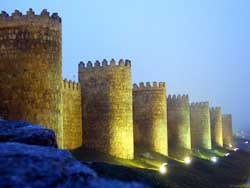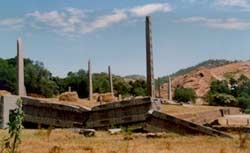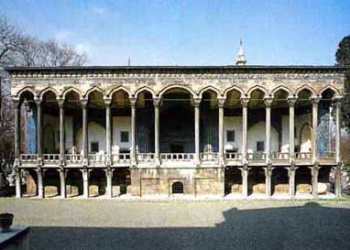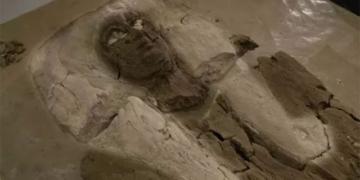In the 1960s, Italian engineer Giorgio Rosa built the Rose Island, located about 11 kilometers off the coast, so well constructed that explosives could not sink it.
Giorgio Rosa, along with a few friends, created a structure covering 400m2 in the Adriatic Sea, approximately 11.6 km from the coast of Rimini, Italy. He named this place the Republic of Rose Island, proclaimed himself president, and declared it an independent nation on May 1, 1968. The Republic of Rose Island had Esperanto as its official language, Mill as its currency, its own postage stamps, and even a national anthem and flag.
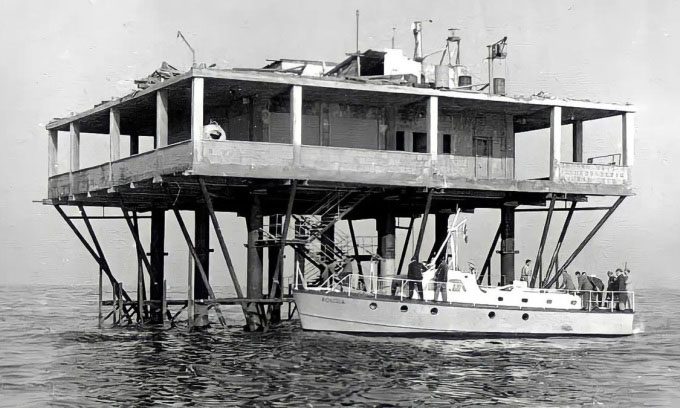
Rose Island off the coast of Rimini, Italy. (Photo: Wikimedia Commons/Emilia Romagna Tourism).
The island quickly attracted many visitors, becoming famous and is still mentioned today, despite its short existence. So how did the construction of this structure take place?
Rosa initially designed the island as a five-level platform, sturdy enough to withstand the challenges of the Adriatic Sea. This area is subject to strong, cold winds, including the Bora wind, which blows from the northeast during the cold months. This type of wind often creates short, rapidly changing waves that can make the sea quite turbulent. High waves would also hinder construction and navigation. Additionally, the salinity of the seawater could corrode the metal components of the structure.
Thus, Rosa faced many issues to ensure his island nation would be stable and safe for all residents. Moreover, once he selected appropriate materials, he had to find ways to transport them to the site with limited financial resources. This was likely the reason why the construction of Rose Island took so long to begin. Even then, weather and sea conditions frequently interrupted progress, allowing Rosa’s team to work an average of only three days a week.
Rosa chose to build the structure about 500 meters from Italy’s territorial waters. He operated from a simple house at the Rimini pier, conducting research in the area for two years.
Initially, Rosa planned to create an island by raising the seabed with a sand dredging system, stabilizing it with seaweed. However, he eventually developed a patented system of lift columns, using nine pillars to raise the platform approximately 8 meters above the seabed.
Considering the size and weight, transporting the columns would be very costly. To address this, Rosa created hollow columns that could be towed to the site by motorboat. Once there, he filled one end of each column with water and dropped them vertically to the seabed. Rosa then inserted additional steel pipes into the columns. This helped anchor the columns to the seabed, providing stability and load-bearing capacity. To prevent the steel pipes from corroding, Rosa filled them with concrete, which also further increased stability. These would support the 400m2 platform made of reinforced concrete (which could weigh up to 2.53 tons per m3).
To facilitate access to the island, Rosa created a docking point with floating rubber tubes filled with fresh water. They helped stabilize the water surface for passengers to disembark and step onto the island. The docking area was named Haveno Verda and was equipped with a ladder for boarding and disembarking. Notably, Rosa accomplished all of this with limited funding and equipment, and only about a dozen workers.
In 1962, construction paused due to technical and financial issues, but Rosa managed to open the island to the public in 1967, despite having only completed one of the five planned levels. This level featured a bar, restaurant, nightclub, post office, souvenir shop, and sleeping accommodations for visitors. The island also had restrooms and could use fresh water from a water-bearing layer that Rosa’s team discovered when drilling 280 meters below the platform.
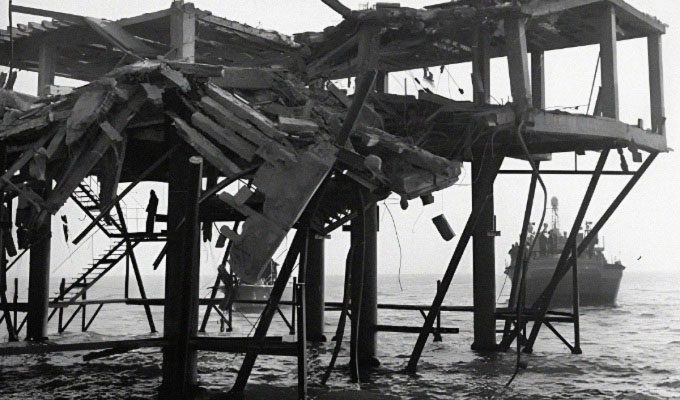
Rose Island after being blown up. (Photo: Rose-Island).
Initially, Rosa intended to build an additional level for his island nation each construction season. However, Italian authorities were unhappy with the unauthorized construction of Rose Island, especially after Rosa declared it an independent nation. They requested Rosa to stop construction in 1966, claiming that the island was located in an area leased to the state energy company Eni.
Ultimately, Italian authorities accused Rosa of profiting from tourism while evading national taxes. Just 55 days after declaring independence, Rose Island was blockaded.
In February 1969, a team of Italian naval divers began demolishing the island using explosives. However, the island was constructed so well that even explosives could not sink it. The demolition was only completed with the help of a storm that swept through on February 26, 1969.








































